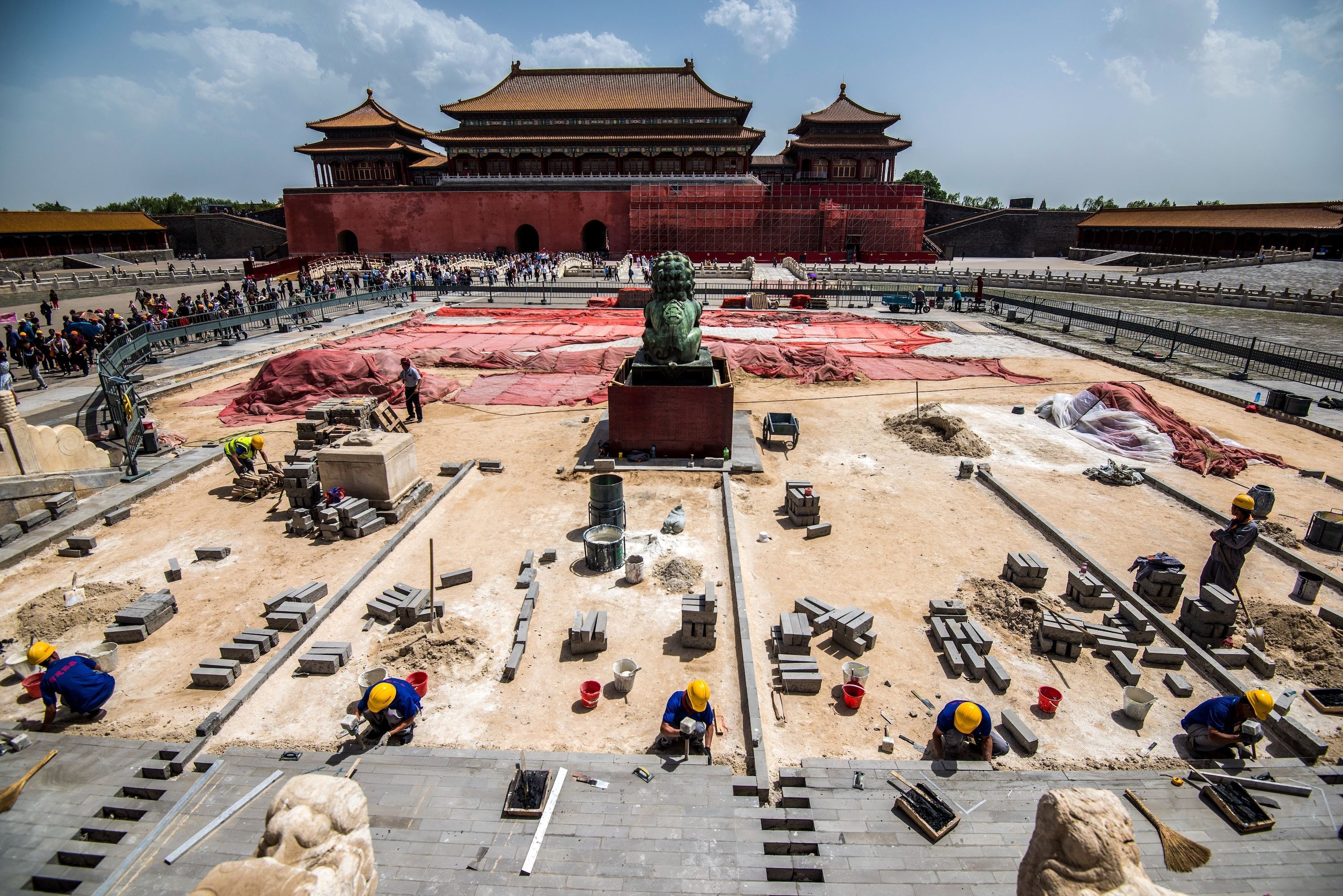
On May 22, 2018, at the Palace Museum, workers were repairing floor tiles. In view of the fact that the ground tiles in the palace were damaged due to a long history and pedestrians trampled on, the Palace Museum repaired the damaged ground in blocks, time and sections. Photo/Visual China
The Forbidden City is more than 600 years old, accompanied by more than 600 years of repair history. During the Ming and Qing Dynasties, the Forbidden City underwent five major renovations. It was rebuilt twice in the early days of the founding of New China and in 1974.
In 2002, in view of the status quo of ancient buildings, the Forbidden City once again launched a large-scale renovation plan. The renovation, which lasted 18 years, was dubbed the “Centennial Overhaul” because of its unprecedented scale.
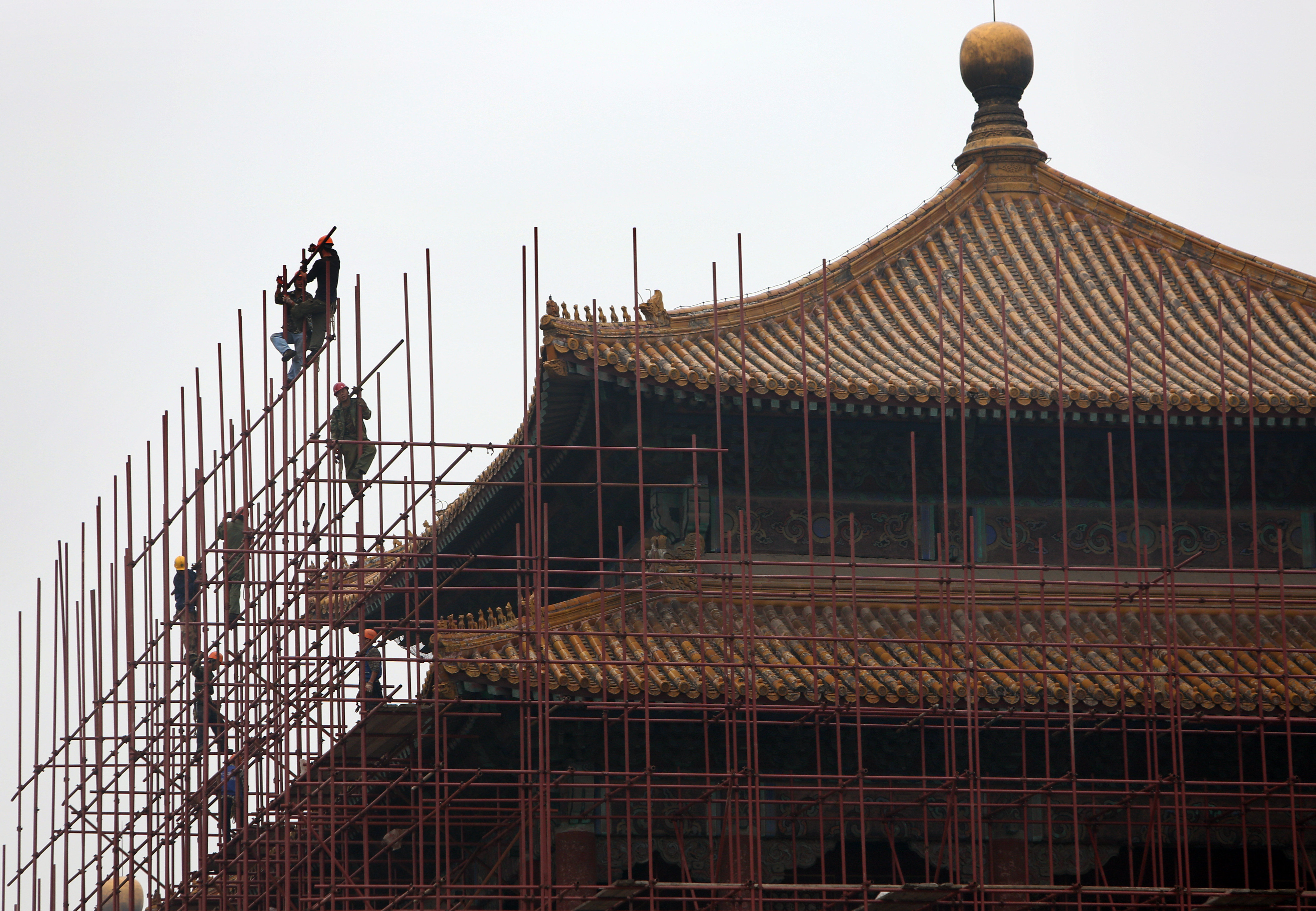
September 8, 2013, Meridian Gate East On the side of the Yanzhi Building, workers are carrying out maintenance construction on the scaffolding. Photo by Huang Yue
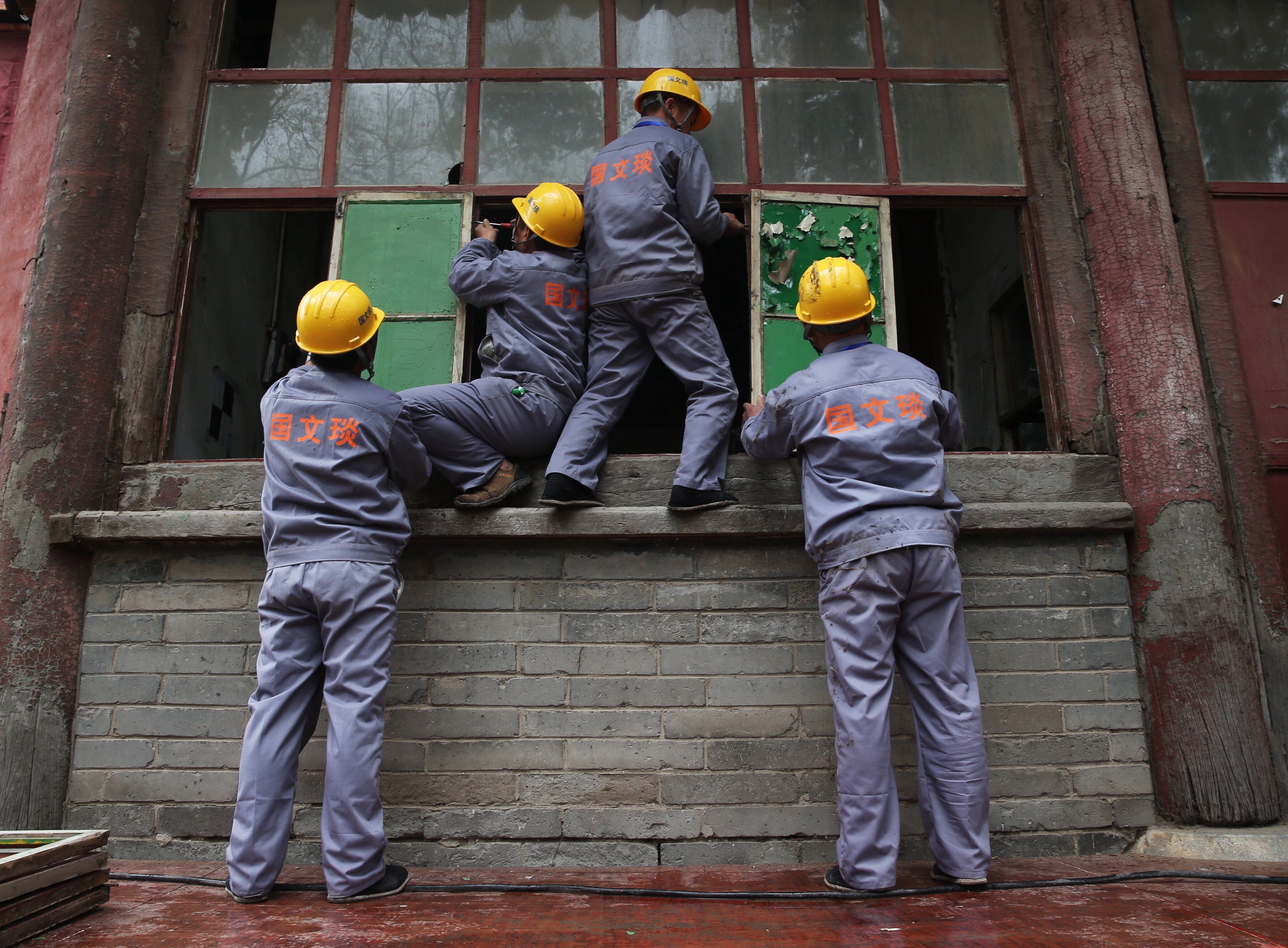
April 2015 On March 2, in the Da Gao Xuan Hall complex, workers removed the glass windows that needed to be replaced. Photo by Beijing News reporter Yin Yafei
The road to repair is not smooth. In the long-term development, the renovation of the ancient buildings of the Forbidden City has formed a unique process method and system, and has cultivated several generations of outstanding craftsmen. Shan Jixiang, the then director of the Palace Museum, introduced that due to the different management characteristics of ancient buildings and ordinary projects, the restoration of ancient buildings in the Palace Museum encountered problems such as bidding and government procurement. In 2010, the renovation team of the Forbidden City was disbanded due to the restriction that its own unit could not participate in the bidding of the Forbidden City project. Later, when some units undertook the ancient construction projects of the Forbidden City, they all started to build teams after winning the bid. A large number of construction personnel without special training entered the Forbidden City. “We stopped some projects after we discovered this problem.”
At the 2016 National Two Sessions, Shan Jixiang, as a member of the Chinese People’s Political Consultative Conference, submitted a “Proposal on Establishing a Research Protection Mechanism for Ancient Buildings in the Forbidden City”. It is mentioned that for the restoration of the ancient buildings of the Forbidden City, the “special case” can no longer regard the restoration of ancient buildings as “ancient building restoration projects”, but must be upgraded to “research protection projects”, and can no longer adopt “project recruitment”. The implementation team is determined by bidding” method, and there must be a stable professional team mastering the repair and protection skills of official ancient buildings.
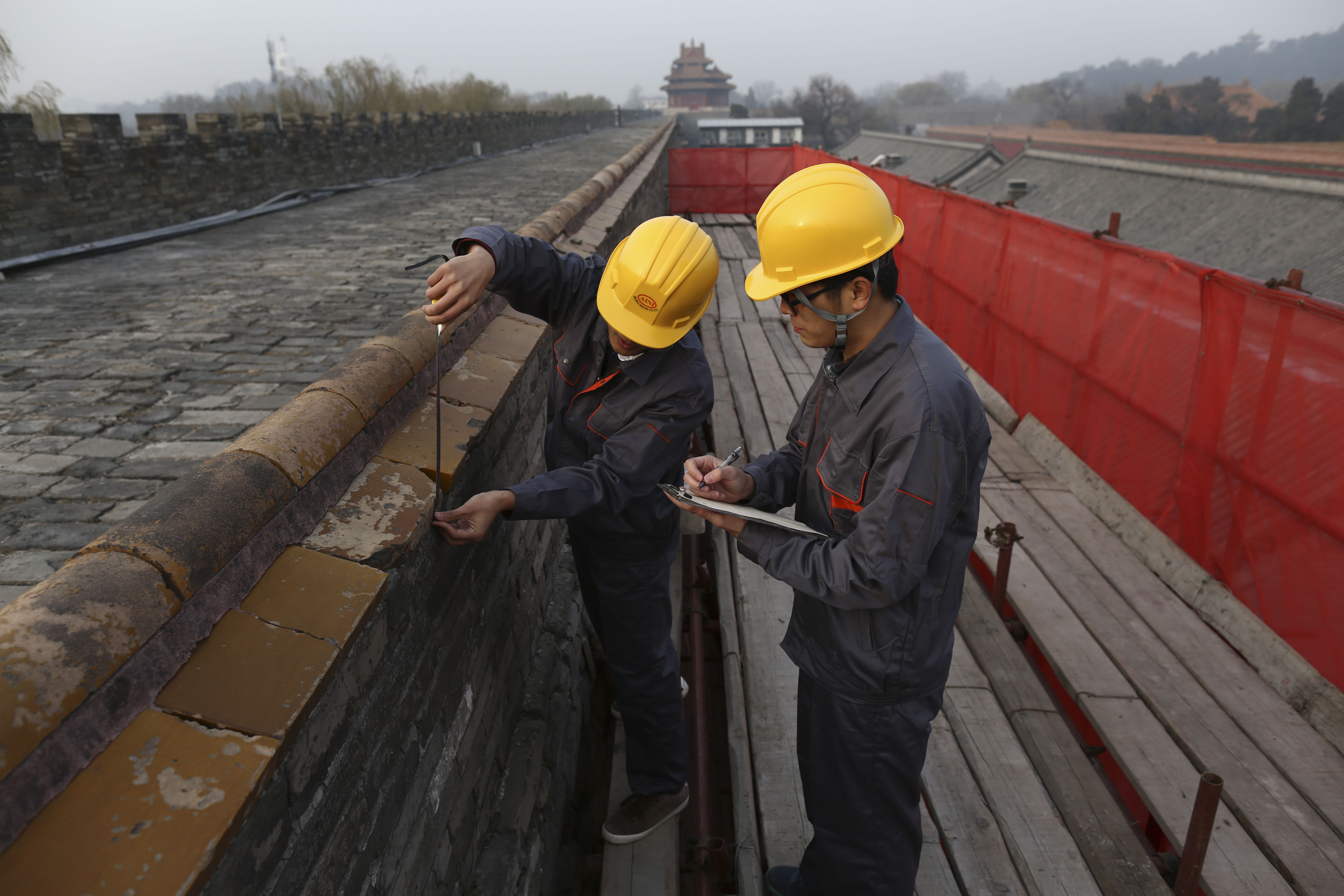
November 26, 2016, Xihuamen On the north side, engineers measure the city brick data. On the same day, the renovation project of the city wall of the Forbidden City officially started. Photo by Beijing News reporter Pu Feng

October 13, 2017, the ancient wooden construction “competition” scene. Photo by Beijing News reporter Pu Feng
With the support of relevant state departments, in the same year, the Yangxin Temple research protection project was launched. This is the first of four research conservation projects initiated by the Forbidden City, the other three being Qianlong Garden, Da Gao Xuan Hall and the Forbidden City Wall.
This project is the first attempt of the Palace Museum in the restoration of ancient buildings, that is, the restoration of ancient buildings is treated with a means of protection and a research attitude, so that the project can be guaranteed. At the same time of quality, restore and display historical information to the maximum extent.

April 15, 2018, the Forbidden City was renovated architecture. Photo/Visual China
In the following two years, researchers have carried out 33 research projects, carried out cultural relics records and collections, cultural relics Repair of damage and disease, survey and mapping of ancient buildings, training and selection of craftsmen, etc. On September 3, 2018, the Yangxin Hall officially started the renovation project of ancient buildings. Shan Jixiang said that in the future, every project of the Forbidden City will be a research protection project.
At the beginning of this year, the Beijing Municipal Bureau of Cultural Relics successively approved a batch of cultural relics restoration projects, including the Forbidden City Wall (Northwest Section).
When the documentary “I Repair Cultural Relics in the Forbidden City” was broadcast, it once aroused heated discussions. In the film, watch restorer Wang Jin said, “If you want to sit still in this line of work, you must be quiet, quiet, and quiet again.” The same is true for ancient building repairs.
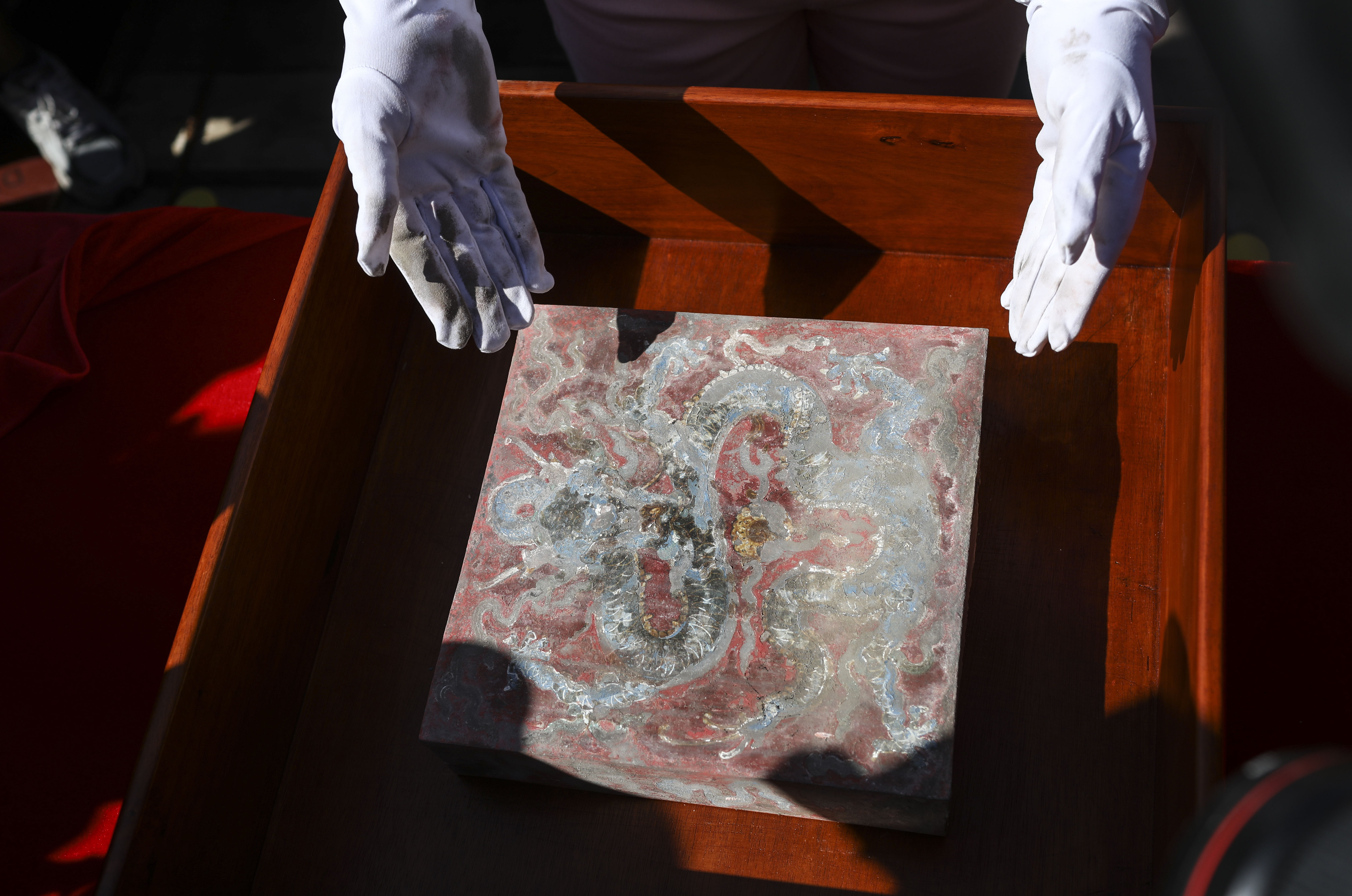
September 3, 2018, Hall of Mental Cultivation The treasure box on the roof is the first quilt in the Forbidden City.Painted treasure chest found. Photo by Beijing News reporter Pu Feng
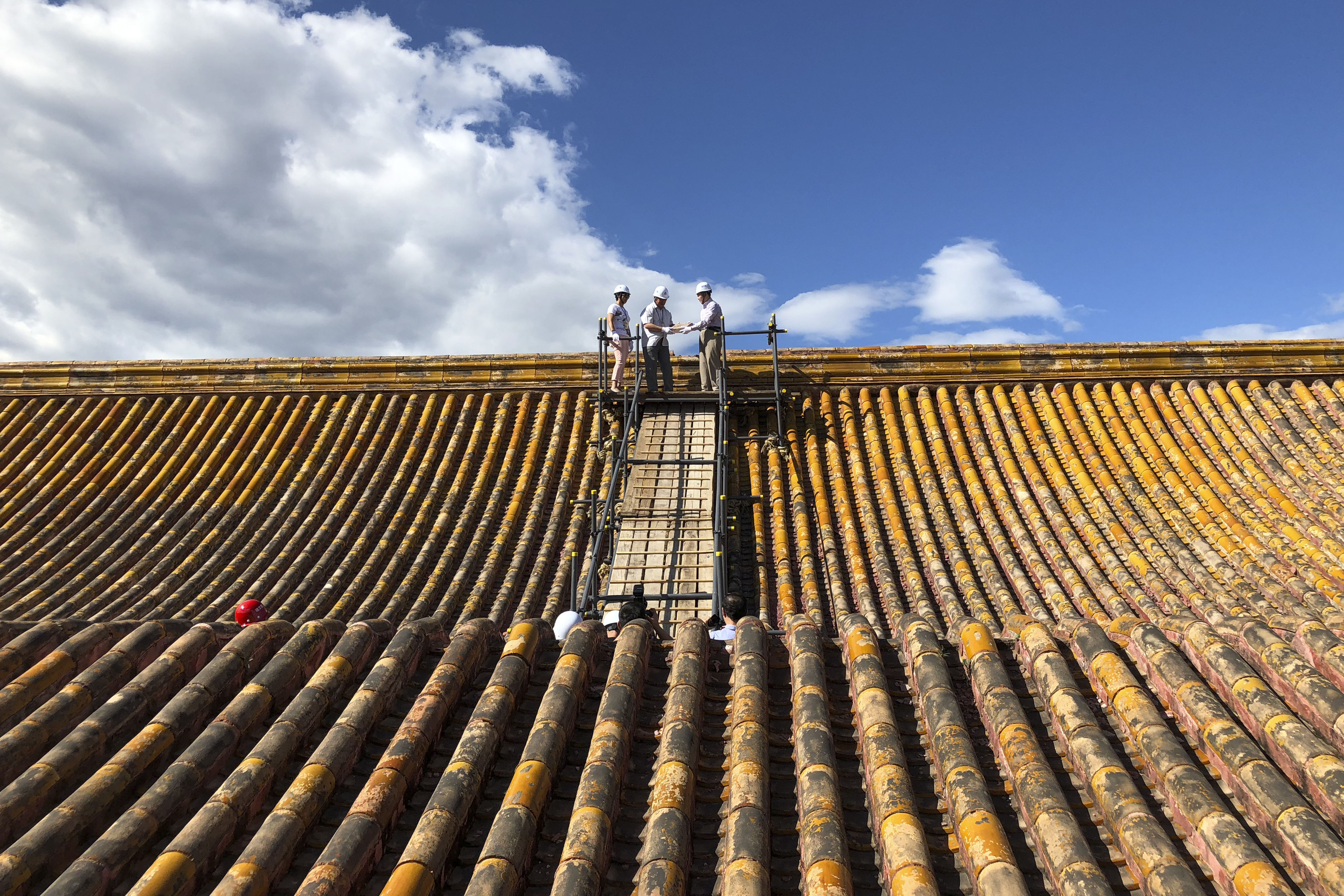
On September 3, 2018, in the Hall of Mental Cultivation, the treasure box stored on the ridge was removed. On the same day, the Hall of Mental Cultivation officially entered the implementation stage of the research protection and restoration of ancient buildings. Photo by Beijing News reporter Pu Feng
Reporter Yin Yafei Pu Feng Ma Jinqian
< p>Editor Liu Jing Zhang Xiangjuan
Proofreading Fu Chunying